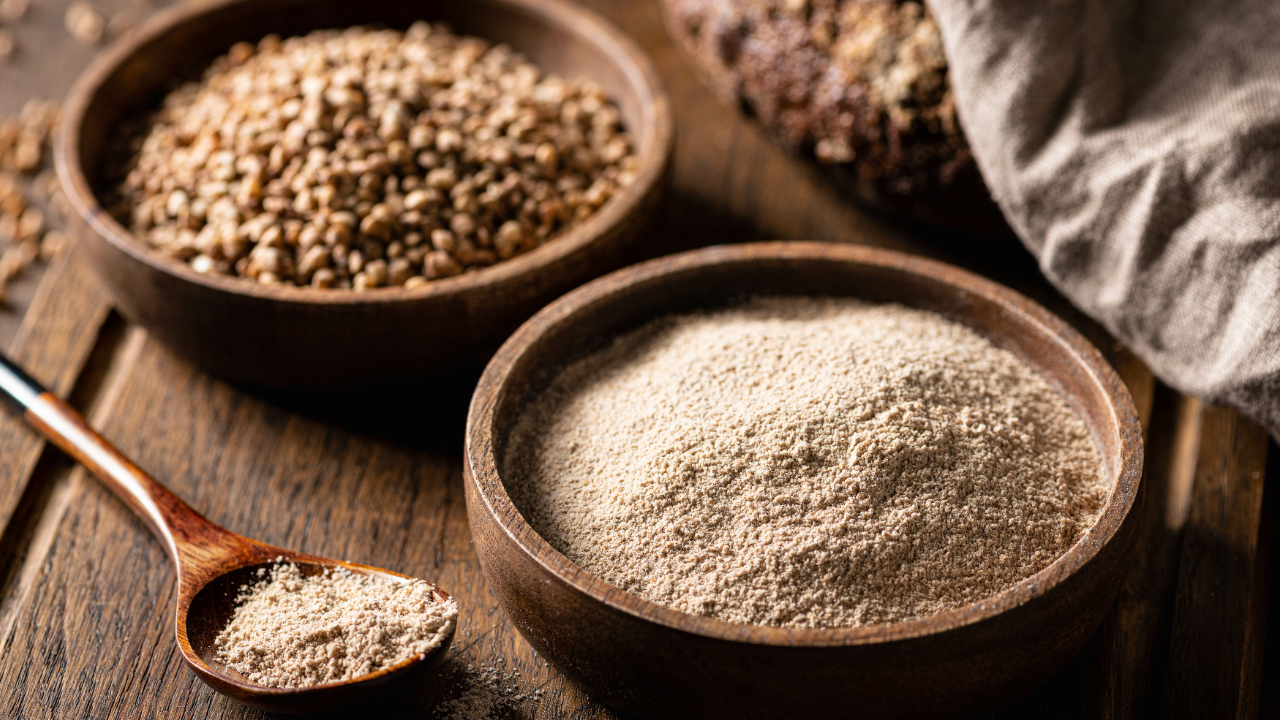Ingredient Spotlight: Why Buckwheat Deserves a Spot in Your Kitchen and Your Garden
Mar 26, 2025
When you hear the word “buckwheat,” you might think of pancakes—or maybe you’re not quite sure what to think. Despite its name, buckwheat is not actually wheat, nor is it even a grain. It’s a pseudocereal—a seed that behaves like a grain in the kitchen—but behind that humble label lies a powerhouse ingredient for bakers, eaters, and growers alike.
Whether you're experimenting with gluten-free baking, rebuilding tired garden soil, or just looking for a flavorful and nutrient-dense pantry staple, buckwheat deserves a spot in your kitchen and your garden plan.
What Is Buckwheat?
Buckwheat is the seed of a plant called Fagopyrum esculentum, which is more closely related to rhubarb and sorrel than to wheat or other cereal grains. It’s been grown for thousands of years across Asia and Eastern Europe, and it's long been a staple in dishes like soba noodles in Japan and kasha in Eastern Europe.
Despite its ancient roots, buckwheat is making a strong comeback in the world of sustainable agriculture and nutrient-forward cooking—and for good reason.
Why Buckwheat is a Baker’s Best Friend
Buckwheat flour has a rich, nutty flavor that adds depth to everything it touches. It’s naturally gluten-free, making it an essential flour for anyone avoiding gluten, but its appeal extends far beyond dietary needs.
Here’s what makes buckwheat flour so special in baking:
-
Flavor Bomb: Toasty, earthy, and subtly sweet. It brings character to pancakes, crepes, muffins, and quick breads.
-
Nutrient Dense: Packed with protein, fiber, and essential minerals like magnesium, iron, and manganese.
-
Bakes Beautifully: It pairs wonderfully with almond flour, oat flour, or even a touch of whole wheat flour if you're not gluten-free, adding tenderness and complexity.
-
Versatile: You can use it in everything from rustic sourdough to delicate cakes to hearty galettes.
A few of my favorite ways to use buckwheat in the kitchen:
-
Buckwheat Banana Bread: Rich flavor with extra staying power.
-
Buckwheat Yogurt Pancakes: A twist on a classic breakfast dish that’s endlessly customizable.
-
Gluten-Free Muffins: Especially good with blueberries or chopped apples.
-
Buckwheat Chocolate Chunk Cookies: Trust me on this—buckwheat + dark chocolate = match made in heaven. Swap out about 1/4 of the flour in your favorite recipe for buckwheat flour.
How Buckwheat Builds Better Soil
Buckwheat isn’t just good in the kitchen—it's also a miracle worker in the field.
Farmers and gardeners love buckwheat for what it does beneath the surface. When planted as a cover crop, buckwheat helps regenerate and protect the soil in some powerful ways:
1. Weed Suppression
Buckwheat grows fast—in as little as 4 to 6 weeks. This quick canopy shades out weeds, preventing them from getting established. Fewer weeds mean less need for chemical intervention.
2. Soil Protection
Because it grows so quickly, buckwheat covers bare soil during vulnerable times, such as between spring and fall crops. This prevents erosion, especially on sloped or degraded land.
3. Organic Matter Builder
After flowering, buckwheat can be cut down and turned into the soil as a “green manure.” This feeds the soil microbiome, increases organic matter, and boosts long-term fertility.
4. Pollinator & Beneficial Insect Magnet
Buckwheat’s delicate white flowers are a magnet for bees, parasitic wasps, and other beneficial insects. Planting buckwheat around your veggie garden can increase biodiversity and natural pest control.
Whether you’re managing a few raised beds or a larger farm, buckwheat is an incredible ally in regenerative growing.
How to Use Buckwheat at Home
If you're new to buckwheat, start small and experiment. Here are a few approachable ways to bring it into your kitchen:
1. Buckwheat Groats (Whole)
These are the hulled seeds, great for cooking like rice or quinoa.
-
Use in grain bowls, salads, or soups.
-
Toast them (called kasha) for a nuttier flavor.
2. Buckwheat Flour
You can find light (hulled) or dark (whole) buckwheat flour. I recommend starting with light for a more neutral, less earthy flavor.
-
Substitute 25–50% of the flour in your favorite quick bread or pancake recipe.
-
Try a 100% buckwheat crepe—no gluten needed.
3. Soba Noodles
Authentic soba noodles are made with buckwheat flour—check the label, as many commercial varieties are blended with wheat. They're delicious hot or cold, and perfect with fresh veggies and a miso-ginger dressing.
Supporting the Right Kind of Farming
When you buy buckwheat, try to source from local organic or regenerative farms if you can. Because buckwheat is often used as a cover crop, it’s a great indicator that a grower is taking soil health seriously. Supporting these kinds of farms keeps money in your local food economy and ensures your dollars are going toward healthy soil, thriving pollinators, and nutrient-rich food.
Final Thoughts
Buckwheat is a rare and wonderful thing: a food that’s good for you, great to cook with, and even better for the planet. From its deep roots in traditional cuisines to its rising profile in regenerative agriculture, buckwheat is more than just a trendy flour—it’s a symbol of what food can be when we grow and eat with intention.
So pick up a bag of buckwheat flour or groats this week. Try something new in the kitchen. And if you have garden space, throw down some buckwheat seeds this spring or summer. Your soil—and your baked goods—will thank you.
Stay connected with the latest posts, recipes & events!
Join our mailing list to receive the latest news and updates.
Don't worry, your information will not be shared.
We hate SPAM. We will never sell your information, for any reason.

